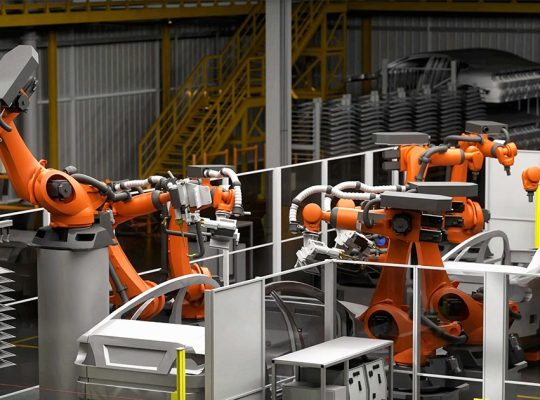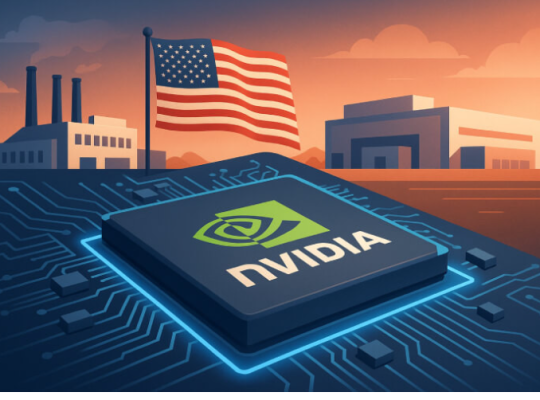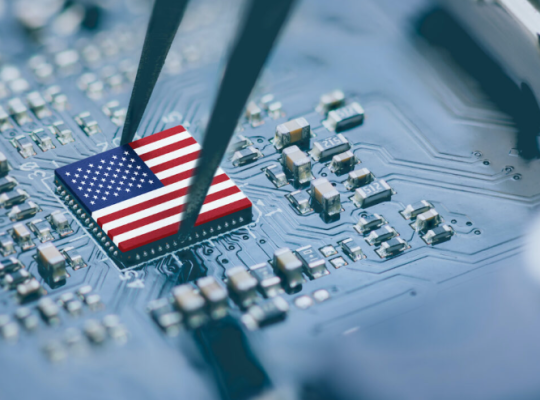Nvidia’s domestic manufacturing plans are poised to have a profound impact on various aspects, particularly within the American semiconductor industry and broader tech landscape. Here’s a detailed breakdown:
1. Strengthening the U.S. Semiconductor Ecosystem and Supply Chain Resilience
Reduced Reliance on Taiwan: This is a primary driver. By having more advanced chip fabrication (like TSMC’s Arizona fabs producing Nvidia’s Blackwell chips) and crucial advanced packaging facilities (e.g., Amkor, SPIL in Arizona) on U.S. soil, the U.S. significantly reduces its vulnerability to geopolitical disruptions in the Asia-Pacific region.
Completing the Domestic Supply Chain: Nvidia isn’t just focusing on chip fabrication. Their partnerships with Foxconn and Wistron to build supercomputer manufacturing plants in Texas mean that the entire process, from chip design and fabrication to packaging, testing, and final system assembly, will have a stronger domestic footprint. This creates a more resilient and integrated U.S. supply chain for high-performance AI infrastructure.
Catalyst for Further Investment: Nvidia’s multi-billion dollar commitment, combined with the U.S. CHIPS and Science Act incentives, is expected to encourage other semiconductor companies and their suppliers to also invest in U.S. manufacturing, further strengthening the domestic ecosystem.
2. Economic Impact and Job Creation
Hundreds of Thousands of Jobs: Nvidia claims its investments will create “hundreds of thousands of jobs” across various segments of the supply chain, including high-skill engineering, research and development, and advanced manufacturing roles, as well as construction and support services.
Economic Growth in Key States: States like Arizona (with TSMC’s fabs and packaging plants) and Texas (with supercomputer assembly) are becoming hubs for advanced semiconductor manufacturing, bringing significant economic benefits through direct employment, increased tax revenue, and the growth of supporting industries.
Ripple Effect: The semiconductor industry has a high multiplier effect, meaning each direct job supports several indirect jobs in related sectors, boosting local economies.
Increased Domestic Output: Producing high-value AI chips and supercomputers domestically contributes directly to the U.S. GDP and strengthens its position in a critical global industry.
3. Technological Leadership and Innovation
Maintaining AI Supremacy: By ensuring a secure and reliable domestic supply of cutting-edge AI chips, the U.S. aims to maintain and extend its leadership in artificial intelligence research, development, and deployment.
Faster Iteration and R&D: Proximity between chip designers (like Nvidia) and advanced fabs can lead to faster iteration cycles for new chip designs, accelerating innovation. Increased domestic R&D investment is also expected.
Development of New Manufacturing Techniques: Nvidia is leveraging its own AI technologies, such as digital twins (Omniverse) and robotics, to design and manage these advanced manufacturing facilities. This could lead to new, more efficient, and highly automated production methods within the U.S.
4. Geopolitical and National Security Implications
Reduced Strategic Vulnerability: The emphasis on domestic production is a direct response to geopolitical risks, particularly concerning Taiwan and potential disruptions in the global chip supply. A more self-reliant U.S. semiconductor industry enhances national security.
Leverage in International Relations: A strong domestic manufacturing base gives the U.S. greater leverage in trade negotiations and in setting global technology standards. The recent ability to resume H20 AI chip sales to China, linked to rare earth material access, highlights how critical these chips are in broader geopolitical strategies.
Export Control Compliance: Domestic production can simplify compliance with export controls and allow the U.S. to better control access to its most advanced technologies.
5. Workforce Development and Education
Demand for Skilled Labor: The expansion of advanced manufacturing will create a huge demand for highly skilled labor, from semiconductor engineers and process technicians to robotics specialists and AI researchers.
Investment in Education and Training: To meet this demand, there will be increased collaboration between industry, government, and educational institutions (universities, community colleges) to develop specialized training programs and curricula focused on semiconductor manufacturing and AI.
Attracting and Retaining Talent: The U.S. will need to attract and retain top talent globally to staff these advanced facilities, potentially leading to new immigration policies or incentives for skilled workers.
Challenges and Long-Term Considerations:
Higher Costs: Production costs in the U.S. remain higher than in Asia, which could impact the ultimate cost of AI chips and the profitability of domestic fabs. Government subsidies (CHIPS Act) are essential to mitigate this.
Long Lead Times: Building and ramping up advanced fabs takes years, so the full impact of these plans will materialize over the next decade.
Sustaining Investment: Maintaining the momentum of domestic manufacturing will require sustained government support and continuous private sector investment.
Global Interdependence: While reducing reliance on specific regions, the semiconductor industry remains inherently global. The U.S. will still depend on a global supply chain for raw materials, specialized equipment, and certain components.
In summary, Nvidia’s domestic manufacturing plans are a cornerstone of the broader U.S. strategy to revitalize its semiconductor industry. The impact will be transformative, fostering economic growth, creating high-value jobs, strengthening national security, and solidifying the U.S.’s position at the forefront of AI and advanced computing.
















